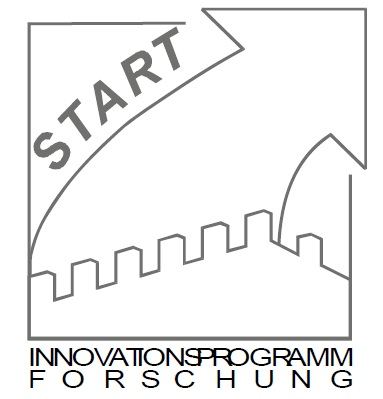START - Compartment Syndrome
Background
- A compartment syndrome is characterised by a considerably increased tissue pressure within a muscle compartment composed of several muscles, which are surrounded by connective tissue (see schematic drawing).
- Due to the increased pressure the microcirculation, i.e. the blood perfusion in the tissue, is disturbed.
- The only way to avoid serious consequences like muscle and/or nervous tissue necrosis, or even the loss of whole body parts is an immediate treatment (as shown on the photos).
- Up to now, the only objective method available for the diagnosis of a compartment syndrome is an invasive pressure measurement by means of needle injection.
Aim
Development of new reliable, non-invasive methods based on ultrasound measurements for the monitoring of imminent compartment syndromes and for the diagnosis of acute compartment syndromes.
Partner
- RWTH Aachen University, University Hospital, Department for Orthopaedics and Trauma Surgery
- RWTH Aachen University, Helmholtz-Institute for Biomedical Engineering, Chair of Medical Engineering (mediTEC)
Funding

This research project was supported by the START-Program of the Faculty of Medicine of the RWTH Aachen University.
(Project term: 1/2009-12/2011)
Publications
- R.M. Sellei, S.J. Hingmann, C. Weber, S. Jeromin, F. Zimmermann, J. Turner, F. Hildebrand & H.-C. Pape: Assessment of elevated compartment pressures by pressure-related ultrasound: a cadaveric model. Eur J Trauma Emerg Surg, 2015, 41(6), pp. 639-45
- R.M. Sellei, S.J. Hingmann, P. Kobbe, C. Weber, J.E. Grice, F. Zimmermann, S. Jeromin, F. Hildebrand & H.-C. Pape: Compartment elasticity measured by pressure-related ultrasound to determine patients "at risk" for compartment syndrome: an experimental in vitro study. Patient Safety in Surgery, 2015, 9, pp. 6
- R.M. Sellei, A. Waehling, C.D. Weber, S. Jeromin, F. Zimmermann, P.A. McCann, F. Hildebrand & H.-C. Pape: Contrast enhanced ultrasound (CEUS) reliably detects critical perfusion changes in compartmental muscle: a model in healthy volunteers. Eur J Trauma Emerg Surg, 2014, 40(5), pp. 535-9
- S. Jeromin, I. Bobb, M. Hübner, F. Schmidt, K. Radermacher, H.-C. Pape & R. Sellei: A new approach for objective non-invasive diagnosis of an imminent compartment syndrome. Biomedizinische Technik, 56 (Suppl. 1), 2011
- R.M. Sellei, S.J. Hingmann, M. de la Fuente, F. Schmidt, M. Knobe & F.U. Niethard: Ein nicht invasives, Ultraschall-gestütztes Verfahren zur frühzeitigen Diagnostik und Verlaufsbeobachtung des drohenden Kompartmentsyndroms. 57. Jahrestagung der Vereinigung Süddeutscher Orthopäden e. V., 2009
- R.M. Sellei, S.J. Hingmann, M. Knobe, M. de la Fuente, F. Schmidt, K. Radermacher & H.C. Pape: Non Invasive Assessment of Compartment Pressures by Ultrasound: An In Vitro Mode. Proceedings of the Eighth International Conference on the Ultrasonic Measurement and Imaging of Tissue Elasticity, 2009, pp. 70


